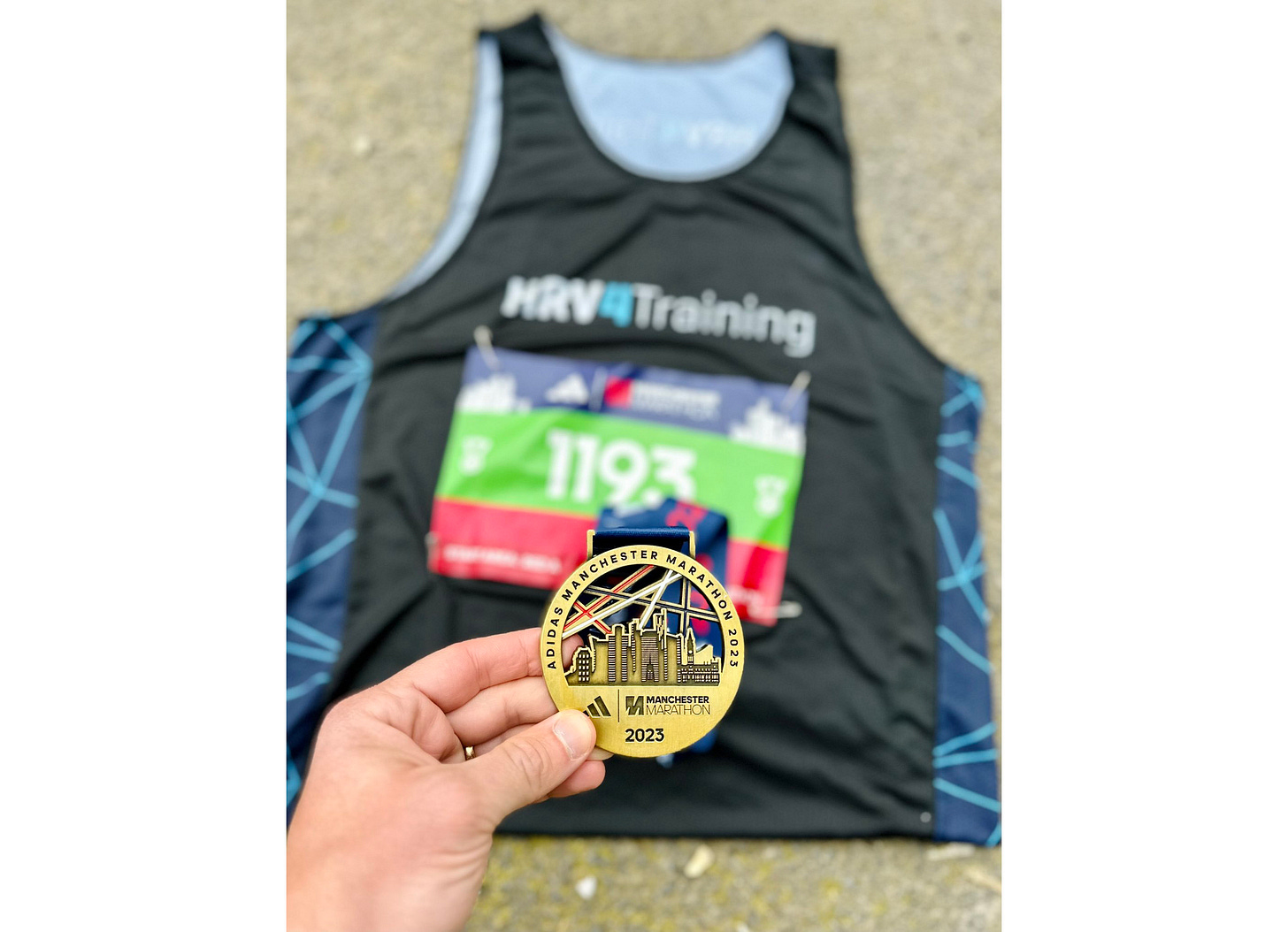hi there 👋
I hope all is well.
Here is my April recap, broken down by topic, with links to the individual articles.
I hope you’ll find them useful.
Please feel free to comment below or in the individual articles should you have any questions, and I will try to follow up.
Take care!

Heart rate variability (HRV) 🫀
Data quality for heart rate variability (HRV) measurement. Artifact removal is probably the most important and (unfortunately) most overlooked step of the signal processing pipeline required to compute HRV features. While all beat-to-beat data should go through artifact removal, the issue becomes particularly important for PPG measurements, as they are more prone to noise. Learn more about the implications, in this blog.
Everything you need to know about VO2max estimates. VO2max estimation is a feature we provide in HRV4Training since already 7-8 years and is present in a few wearables and smartwatches as well (e.g. Garmin, Coros, Apple Watch, etc.).
In this blog, I cover the basics of how these models normally work, so that we can better understand the limitations, and how we can potentially use them to track changes in fitness over time. Here is my own data, lab vs app estimate.
Research. Two recent studies I came across this month and touching on points I’ve recently discussed, such as the ideal measurement position for HRV analysis:
Detraining Effect on Cardiac Autonomic Response to an All-Out Sprint Exercise in Trained Adolescent Swimmers. In this study HRV was measured before and after an all-out sprint, and also before and after 5 weeks of training cessation. HRV after the all-out session before training cessation was higher than HRV prior to the all-out effort but post-training cessation (i.e. when detained). HRV was also associated with performance (in line with what was expected with detraining). In other words, this study highlights how important consistency is, as HRV was higher after a hard effort when fit, than at rest when detrained. A note on the measurement protocol as well: "Importantly, swimmers were assessed in the same position on both visits—that is, seated on the floor next to the lane with the back supported and legs bent. Moreover, they were asked to remain relaxed, to breathe normally, and not to speak or move during the HRV evaluation" - this is exactly what I’d recommend doing for your measurements.
The Potential of Heart Rate Variability Monitoring for Mental Health Assessment in Top Wheel Gymnastics Athletes: A Single Case Design. As the authors report, "only a weak linear relationship was found between rMSSD during rest upon waking and rMSSD while standing upon waking" "although the former showed only a weak linear relationship with psychological indices, the latter showed moderate relationships" - another study highlighting how sitting is a more sensitive measure of physiological stress (which includes physical and psychological stressors). Sorry, wearables.
Building 🛠️
New HRV4Training Pro. I have been busy building the new HRV4Training Pro and have started putting together various articles that can serve as a user guide and overview of the various features. You can learn more about the main principles and you can find a user guide here. In particular, in the past month, I’ve added: aerobic endurance analysis and training load analysis. I’m getting closer to the end and I hope to be able to start beta testing at the end of May. If you are a Pro user, you will be able to try out the new Pro soon.
Coros integration. I have released an integration with Coros, which allows you to measure your ECG with the watch and read it in HRV4Training for interpretation. The data looks really good and consistent with the camera, as I show here. You can learn more about this integration, in this blog.
Training talk 🏃🏻♂️
I finally broke 3 hours in the marathon, yay! - no time yet to blog about this, something for next month.
In the meantime, here is an update on my training for the 100 km del Passatore, which will be on the last Saturday of May:
5 things I've done differently this year while preparing for a 100 km ultramarathon. here are 5 aspects that I tackled differently this year with respect to the last one when I could not complete the race:
Training: focus on the best fitness possible more than volume.
Racing: more frequent racing to also improve my approach to the race (psychologically).
Fueling better: running an ultra is dramatically different from running short distances or even a marathon, it took me a while to find the right formula.
Managing weight: a delicate topic, but I let it slip a bit last year while this year I have been quite focused.
Heat acclimation: there are many ways to reach the same goals, it seems, and some of them might be better than others.
Check out this blog for more details on each aspect.
Training log. As the name says, this is simply my training diary for the year.
That’s all for today, see you next month, and thank you for reading!
Previous newsletters:
Marco holds a PhD cum laude in applied machine learning, a M.Sc. cum laude in computer science engineering, and a M.Sc. cum laude in human movement sciences and high-performance coaching.
He has published more than 50 papers and patents at the intersection between physiology, health, technology, and human performance.
He is co-founder of HRV4Training, advisor at Oura, guest lecturer at VU Amsterdam, and editor for IEEE Pervasive Computing Magazine. He loves running.
Social:





